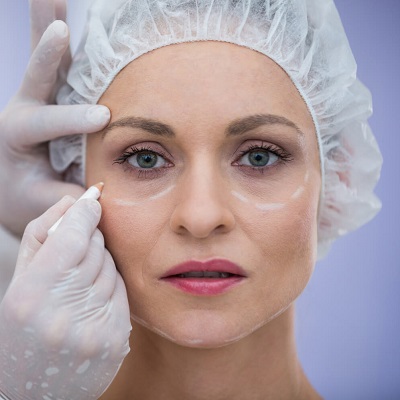When diet and exercise fail to remove stubborn fat deposits, many people turn to medical solutions for a more sculpted body. Among these, Liposuction in Islamabad has become one of the most sought-after cosmetic procedures. But what exactly is liposuction? Beyond the aesthetic appeal, there’s a fascinating scientific process that makes it effective in reshaping the body. Understanding the science behind it can help patients make more informed decisions about whether this treatment is right for them.
What is Liposuction?
Liposuction is a minimally invasive surgical procedure that removes localized fat deposits resistant to diet and exercise. It’s not a weight-loss surgery but rather a body contouring technique designed to sculpt specific areas such as the abdomen, thighs, arms, hips, back, or chin.
The core principle of liposuction is simple yet effective: breaking down and suctioning out fat cells from beneath the skin using specialized equipment. Since fat cells do not regenerate after removal, results can be long-lasting if patients maintain a healthy lifestyle.
The Biology of Fat Cells
To understand liposuction, it’s essential first to grasp how fat works in the human body. Fat cells (adipocytes) are storage units for energy in the form of triglycerides. They expand when the body consumes more calories than it burns, leading to weight gain. Conversely, they shrink when energy expenditure exceeds intake.
However, the number of fat cells in the body remains constant after adolescence. This means while weight loss shrinks fat cells, it does not eliminate them. Liposuction, on the other hand, physically removes fat cells from targeted areas. This permanent reduction in fat cells explains why results are more sculpted and longer-lasting compared to weight loss through diet and exercise alone.
The Liposuction Process: Step by Step
1. Anesthesia and Preparation
The procedure typically begins with either local anesthesia (for small areas) or general anesthesia (for larger areas). The surgeon marks the treatment zones and sterilizes the area to prevent infection.
2. Tumescent Solution
One of the most important innovations in liposuction is the tumescent technique. A sterile solution containing saline, epinephrine, and lidocaine is injected into the treatment area.
-
Saline helps loosen fat cells.
-
Epinephrine constricts blood vessels, reducing bleeding and bruising.
-
Lidocaine provides local anesthesia for comfort.
This fluid makes fat easier to remove while minimizing trauma to surrounding tissues.
3. Fat Removal
A small incision is made, and a thin hollow tube called a cannula is inserted beneath the skin. The surgeon moves the cannula back and forth to break up fat deposits. A surgical vacuum or syringe is then used to suction the dislodged fat out of the body.
4. Sculpting and Symmetry
Liposuction is not just about removing fat but also about contouring. Surgeons carefully sculpt the body to ensure natural-looking proportions. This is where experience and artistic skill matter as much as technical expertise.
5. Recovery Phase
Once the fat is removed, the incisions are closed, and compression garments are applied. These garments reduce swelling, improve healing, and help the skin conform to new body contours.
Types of Liposuction Techniques
Over time, science and technology have introduced several variations of liposuction, each with unique advantages.
-
Tumescent Liposuction
-
Most common method.
-
Uses a tumescent solution to make fat removal safer and less painful.
-
-
Ultrasound-Assisted Liposuction (UAL)
-
Uses ultrasonic waves to liquefy fat before suctioning.
-
Effective for dense or fibrous areas like the back or male chest.
-
-
Laser-Assisted Liposuction (SmartLipo)
-
Uses laser energy to melt fat and stimulate collagen production.
-
It helps with skin tightening and fat reduction.
-
-
Power-Assisted Liposuction (PAL)
-
Uses a vibrating cannula for faster and smoother fat removal.
-
Reduces surgeon fatigue and improves precision.
-
-
VASER Liposuction
-
Advanced ultrasound technology that targets fat cells while sparing other tissues.
-
Results in smoother contours and less downtime.
-
Each method is chosen based on the patient’s body type, fat distribution, and aesthetic goals.
The Healing and Regeneration Science
The recovery from liposuction involves the body’s natural healing response. Post-surgery, the body triggers inflammation to repair tissues. Swelling and bruising occur as blood vessels heal. Over weeks, lymphatic drainage clears excess fluids, and the skin gradually tightens over the treated area.
Collagen production is also stimulated, which improves skin elasticity and firmness. Patients typically see noticeable results within a few weeks, with outcomes visible after three to six months.
Limitations of Liposuction
Despite its effectiveness, liposuction has limitations that patients should understand:
-
It is not a weight-loss solution but a contouring tool.
-
It does not treat cellulite or loose skin.
-
Best suited for patients close to their ideal body weight with stubborn fat deposits.
-
Long-term results depend on lifestyle choices; a poor diet and lack of exercise can cause remaining fat cells to expand.
Risks and Safety Considerations
Like any surgery, liposuction carries some risks, including infection, uneven results, contour irregularities, or fluid accumulation. However, advancements in technology and the expertise of qualified surgeons in Islamabad have significantly minimized these risks. Choosing a reputable clinic and an experienced surgeon ensures both safety and satisfaction.
Why Liposuction is Popular in Islamabad
Islamabad has emerged as a hub for modern cosmetic procedures, including liposuction. Patients from across Pakistan choose the city because it combines advanced medical technology, skilled surgeons, and cost-effective solutions compared to Western countries.
The growing awareness of health, fitness, and aesthetics has also fueled demand. People are increasingly recognizing that cosmetic procedures like liposuction are not about vanity but about confidence, self-image, and overall well-being.
Conclusion
The science behind liposuction lies in its ability to permanently remove fat cells, reshape the body, and give patients more defined contours. From understanding fat biology to the advanced techniques used today, liposuction is truly a blend of medicine, technology, and artistry. For individuals seeking effective body contouring in Islamabad, choosing the right clinic is crucial. SKN Cosmetic Clinic stands out as a trusted name, offering expertise, safety, and personalized care to help patients achieve their dream body with confidence.



